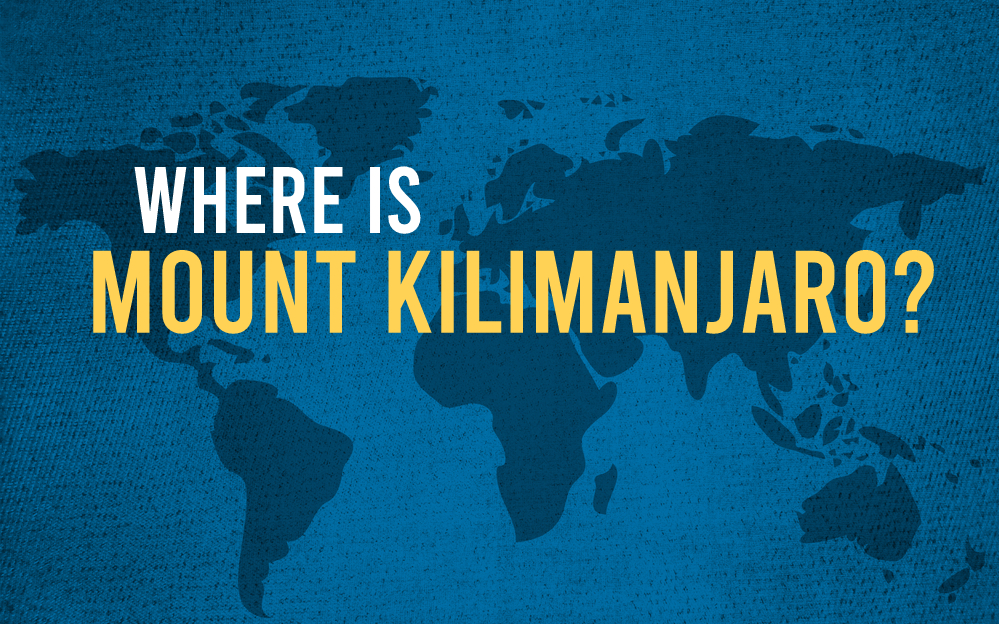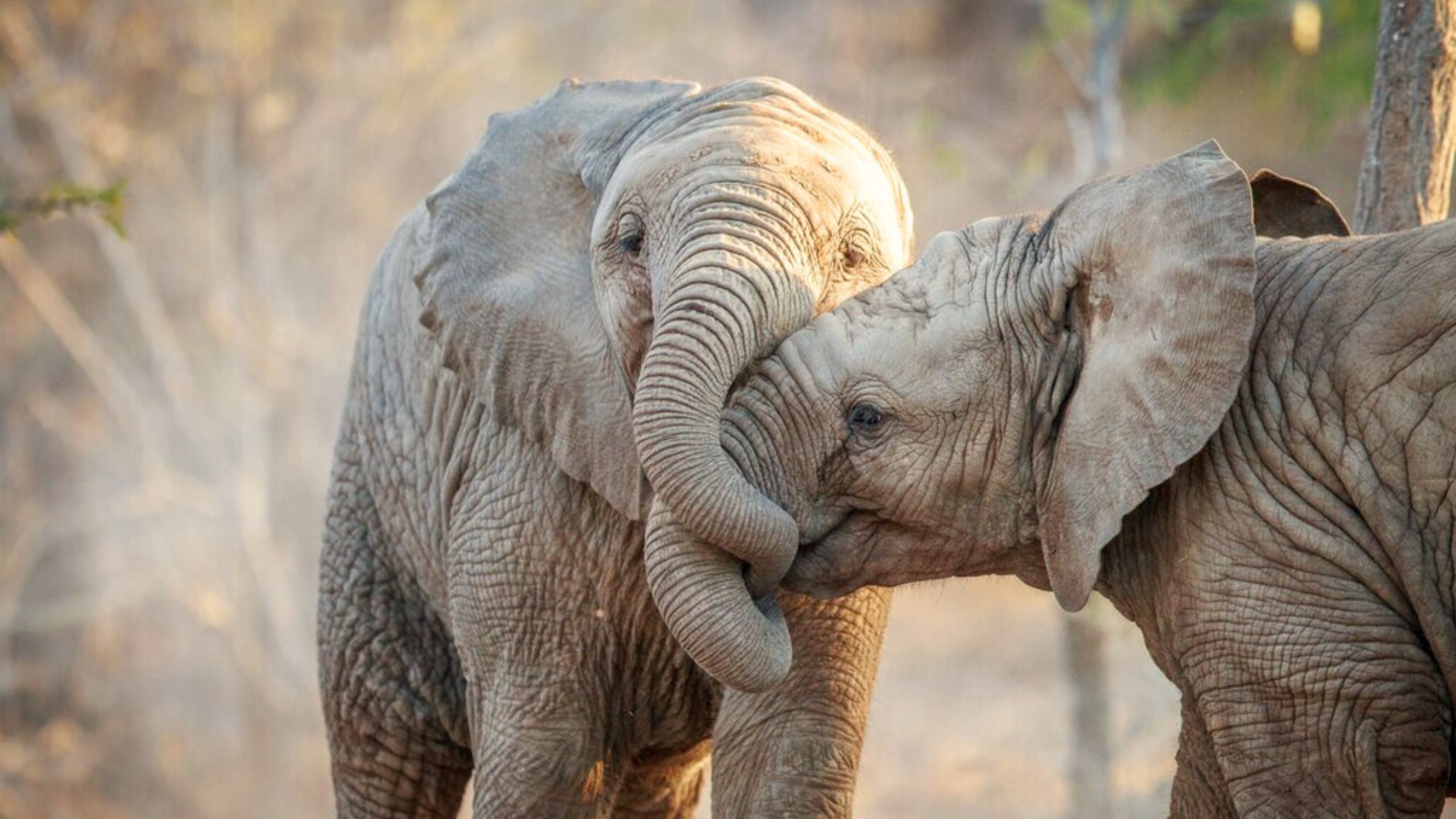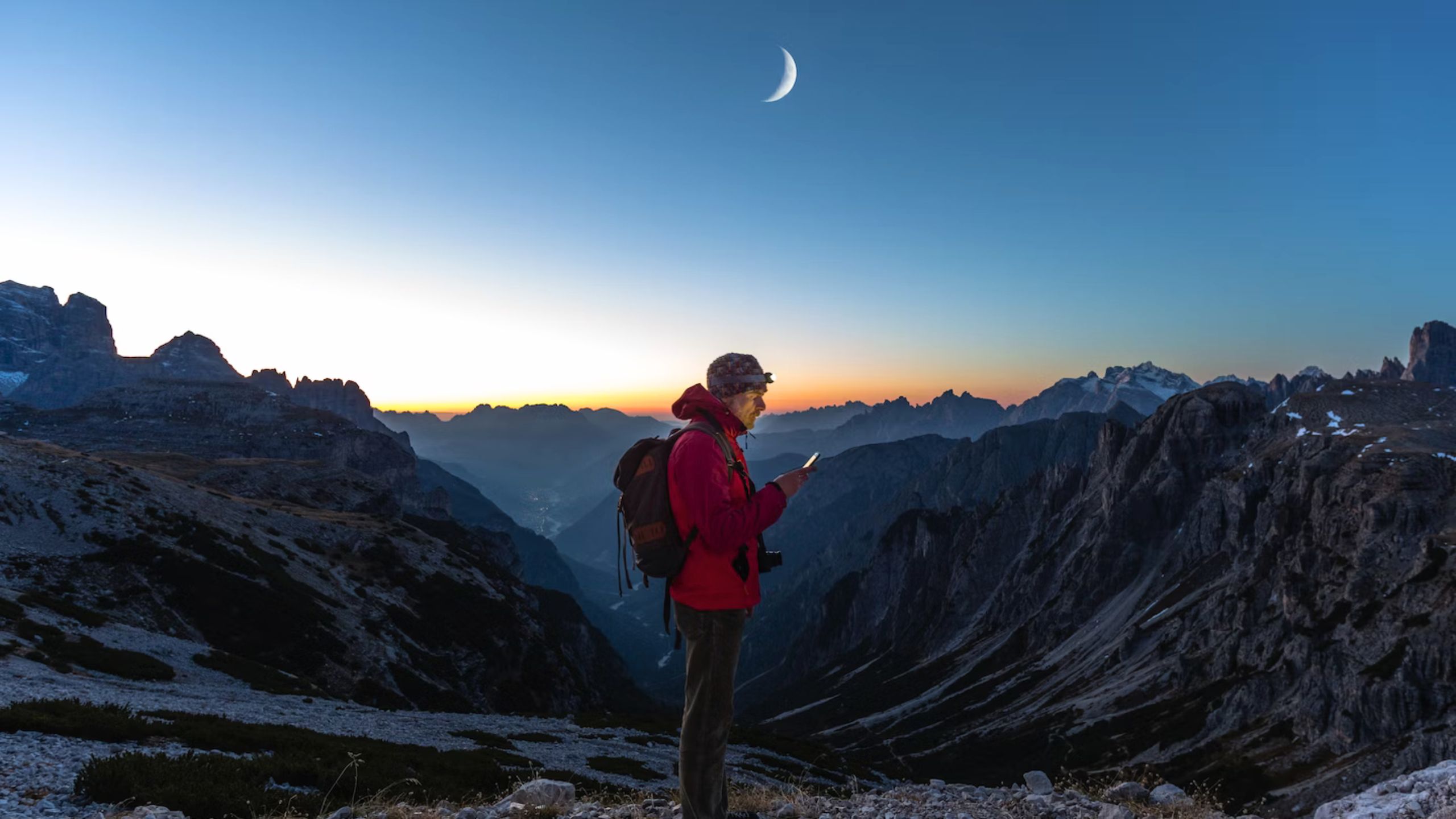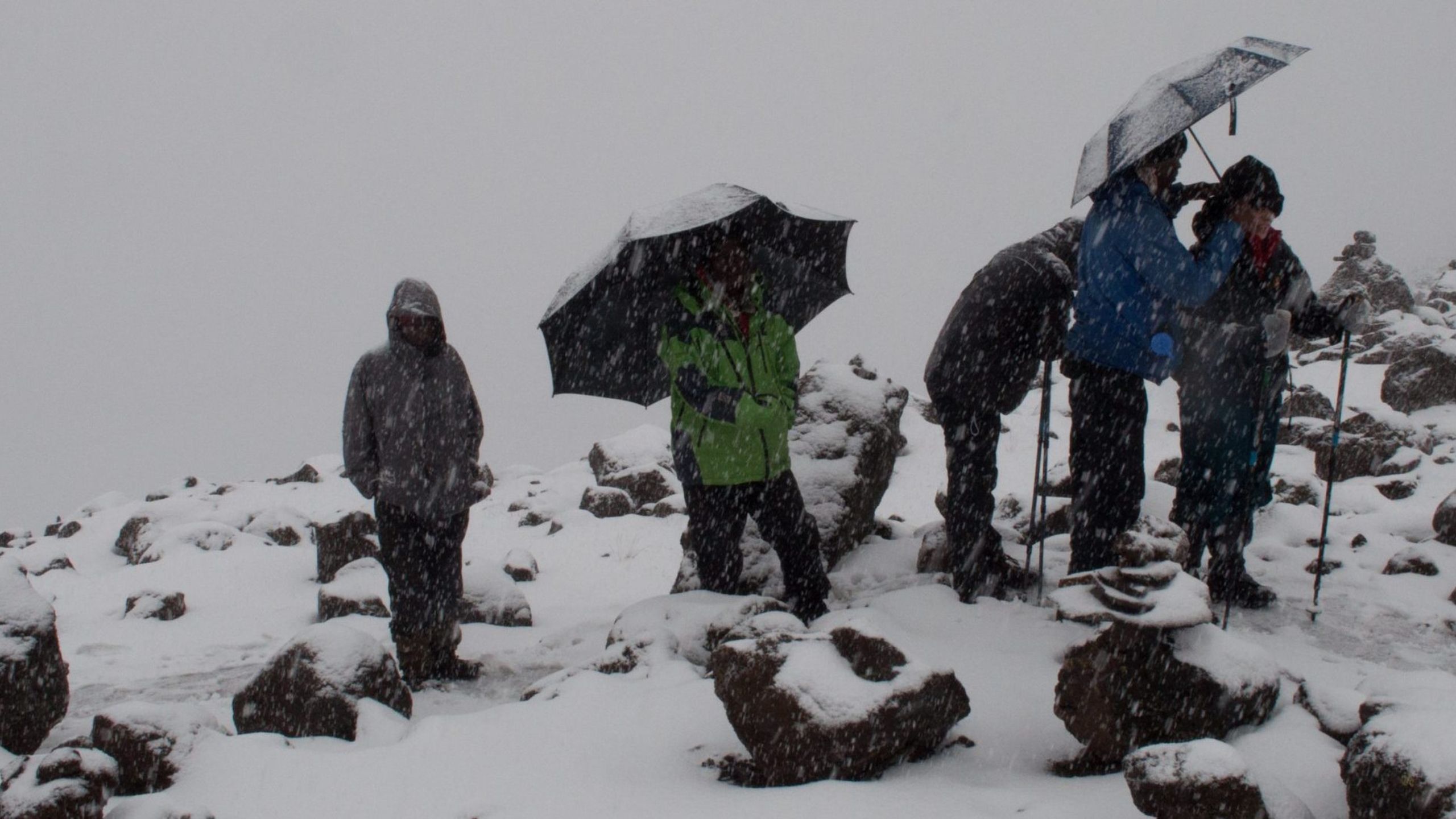If you’re thinking about climbing Kilimanjaro, you probably should know precisely where it is.
Where is Kilimanjaro Located?
Sometimes referred to as the Roof of Africa, Mount Kilimanjaro is located in the continent of Africa. In fact, Kilimanjaro is the tallest mountain in Africa, which makes it one of the Seven Summits. It is also the tallest free standing mountain in the world, meaning it is not part of a range.
It’s height measures 19,341 feet (5,895 meters) above sea level. In topography, prominence refers to the height of a mountain by the vertical distance between it and the lowest contour line encircling it but containing no higher summit within it. The prominence for Kilimanjaro is almost nearly the entire mountain iteslf at 19,308 feet (5,885 meters).
Latitude is a measurement on a map of location north or south of the equator. Longitude is a measurement of location east or west of the prime meridian. Kilimanjaro’s latitude is 3.0674° S. It is located just 190 miles (300 kilometres) south of the equator. Kilimanjaro’s longitude is 37.3556° E.
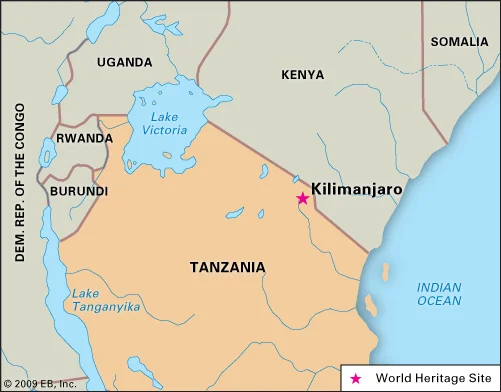
Where is Mount Kilimanjaro Located in Africa?
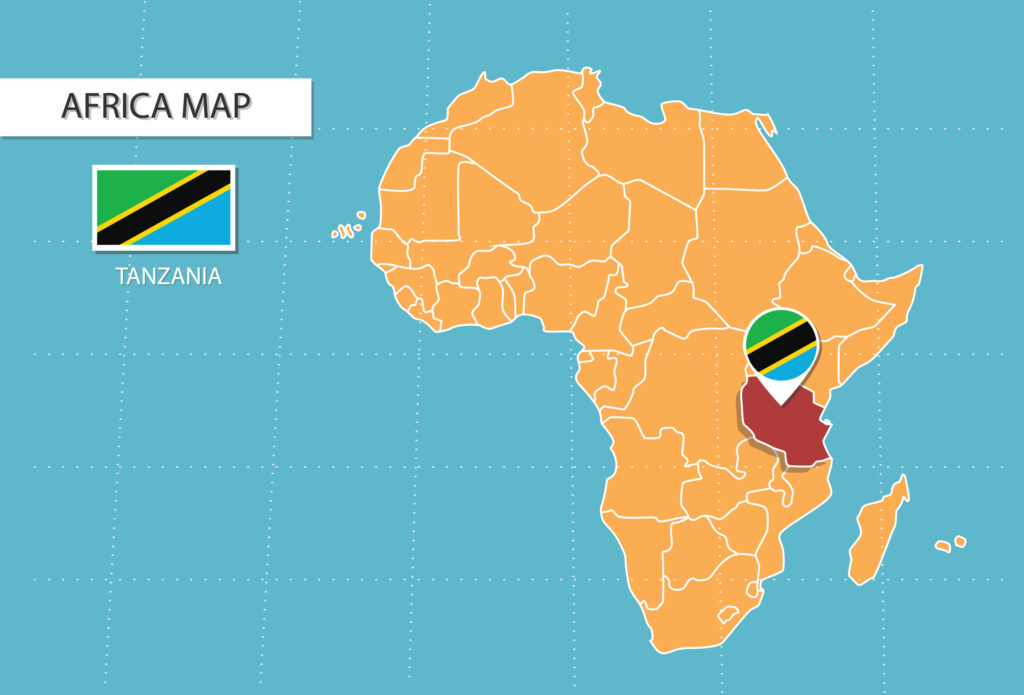
The mountain resides in Tanzania, which is a country in East Africa.
It is bordered by the Indian Ocean to the East. Its neighbors are Kenya and Uganda to the North; Rwanda, Burundi, and the Democratic Republic of Congo to the West; Zambia, Malawi and Mozambique to the South.
Tanzania also includes Zanzibar, an island group located off the coast of the Indian Ocean. Zanzibar is made up of four main islands, of which three are inhabited.
Kilimanjaro National Park

Kilimanjaro National Park was established in 1973. The park covers an area of 652 square miles (1,688 square kilometers). Though the mountain is located near the border of Kenya, the entirety of Kilimanjaro National Park is contained within Tanzania. The park is administered by the Tanzania National Parks Authority, also known as TANAPA.
The park was named a UNESCO World Heritage site in 1987. A World Heritage Site is a landmark or area with legal protection by an international convention administered by the United Nations Educational, Scientific and Cultural Organization (UNESCO). World Heritage Sites are designated by UNESCO for having cultural, historical, scientific or other form of significance.
The Formation of Kilimanjaro

Mount Kilimanjaro is a stratovolcano that was formed 2.5 million years ago.
A stratovolcano is also called a composite volcano. They are built from layers of lava, pumice, volcanic ash, and tephra. The layers stack on each other with each eruption to form a towering, cone-like structure with steep sides.
On the other hand, shield volcanoes are broad and have gentle slopes. They are typically very wide. The name comes from its resemblance to a shield lying on the ground.
Kilimanjaro is made up of three volcanic cones: Kibo, Mawenzi, and Shira.
Kibo is the highest peak, where the summit, called Uhuru Point, is located. Mawenzi is a jagged peak that lies to the east of the summit and stands 16,896 feet tall (3.962 meters). Shira peak collapsed at one point which formed the Shira Plateau.
While Mawenzi and Shira are extinct volcanoes, Kibo is dormant, meaning it could possibly erupt again. Beware – its magma sits only 1,300 feet (400 meters) below the summit crater. The last major eruption was 360,000 years ago.
Kilimanjaro’s Glaciers and Ice Cap
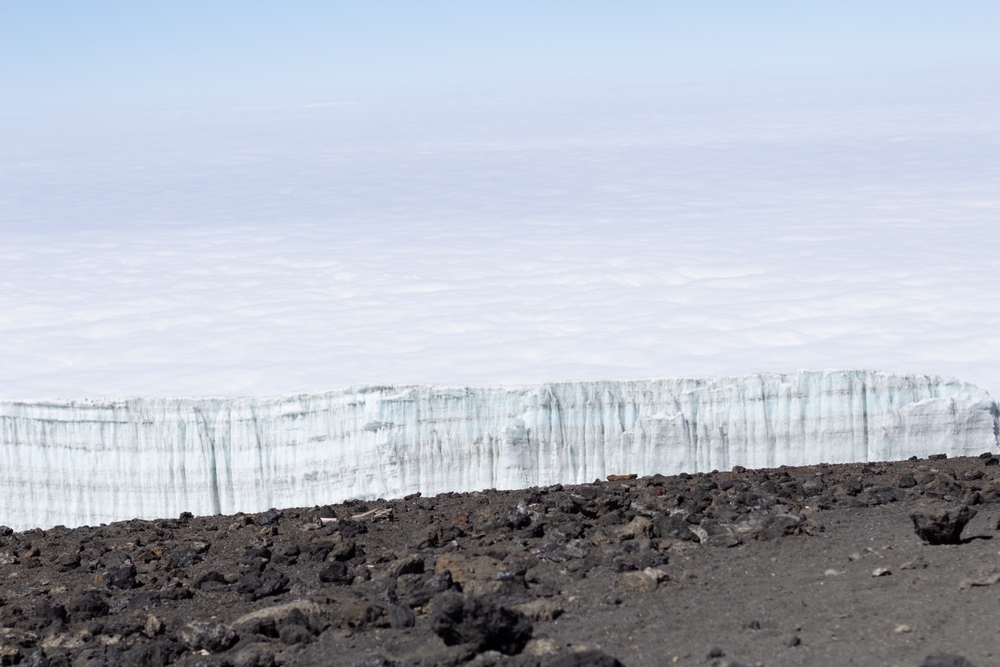
At one point, there were glaciers surrounding the entire central cone of Kilimanjaro, Kibo.
Despite past proclamations that the glaciers on Mount Kilimanjaro would be gone by now, as of 2022 the mountain still has its iconic ice cap. However, indeed the glaciers are disappearing quickly. It is estimated that in the last 100 years, it has lost 90% of its ice coverage. In the past six years, it has lost 70% of its ice mass. At this rate, the glaciers will likely by completely gone by 2040.
In Africa, you can find tropical glaciers in three places – Mount Kilimanjaro, Mount Kenya and the Rwenzori mountain range.
First Ascent of Kilimajaro
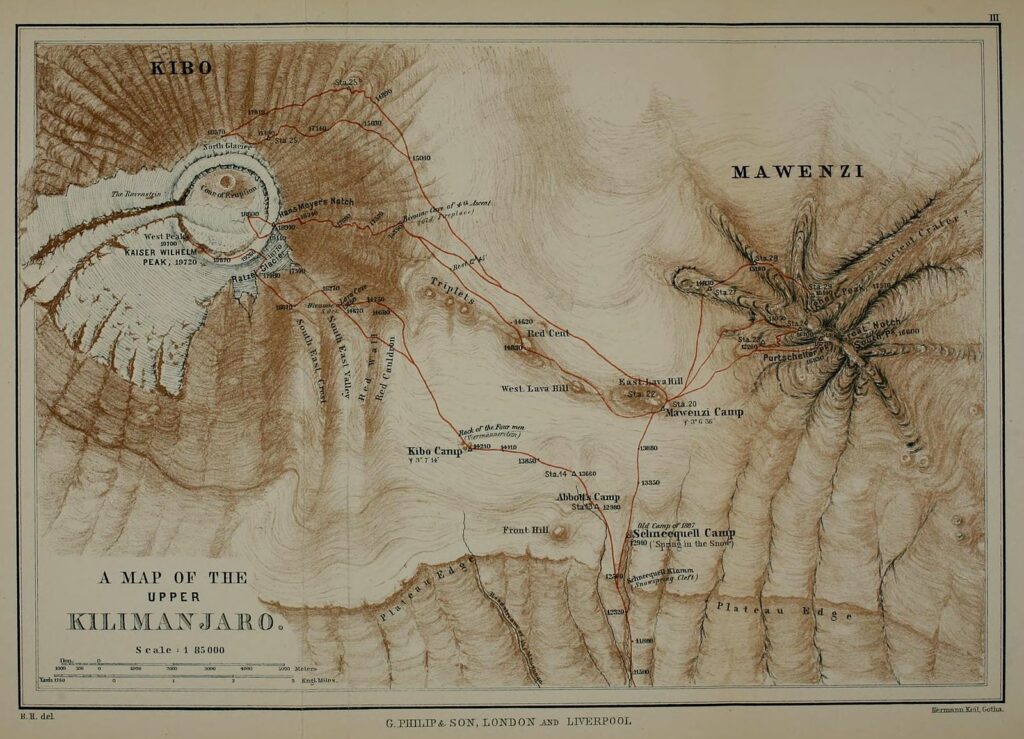
In 1889, Hans Meyer, a German geographer, became the first person to reach the top of Mount Kilimanjaro. It took him three attempts. He was accompanied by Ludwig Purtscheller, an Austrian mountaineer, and a team of locals.
Since his historic achievement, many people have successfully climbed Kilimanjaro. There are now several routes to the top and over 200 guide companies that lead 30,000-50,000 tourists who come every year to test their abilities.
Where Do Kilimanjaro Tours Begin?

Mount Kilimanjaro can be accessed from the town of Moshi or Arusha. These are the closest major cities to Kilimanjaro National Park. Both are used as a launch point for Kilimanjaro treks by operators.
The easiest way to travel to Mount Kilimanjaro is to fly into Kilimanjaro International Airport (JRO). Both Moshi and Arusha are less than an hour’s drive from the airport.
The distance between the airport and Moshi is about 26 miles (41 km). The distance between the airport and Arusha is about 32 miles (52 km).

